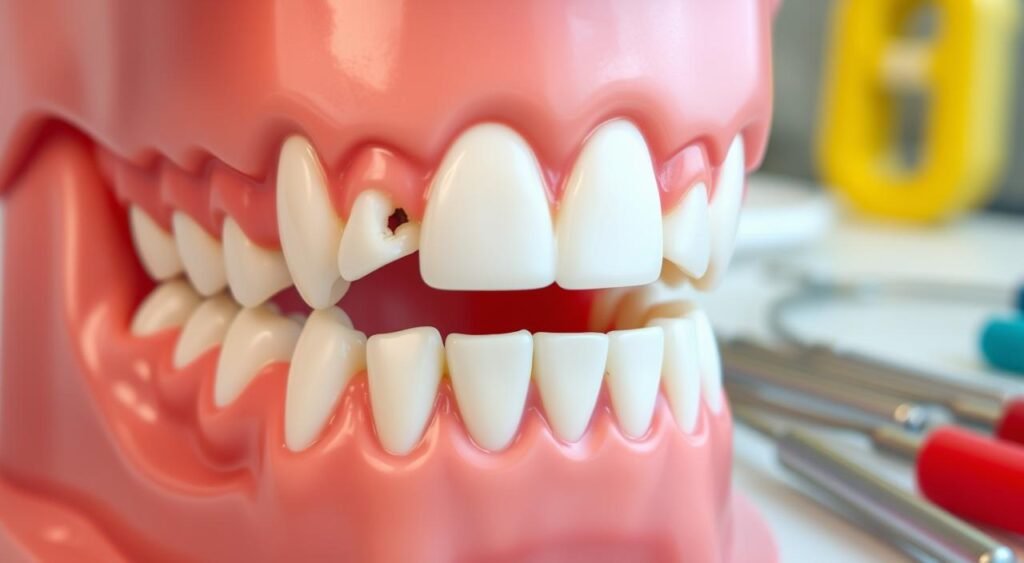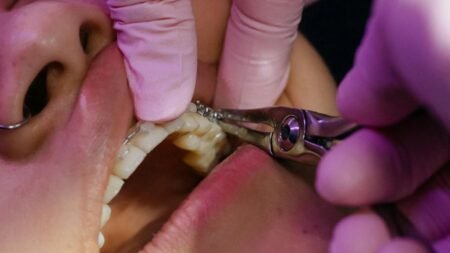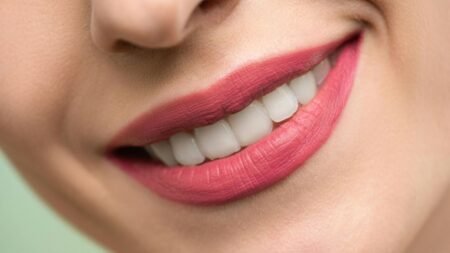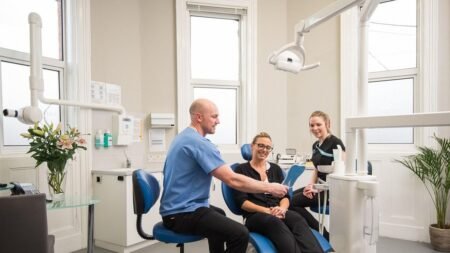Feeling self-conscious about your crooked bottom teeth? You’re not alone. Many people have misaligned teeth, especially the lower ones. But what causes this, and how can you fix it? Let’s dive into the reasons behind crooked teeth and the ways to straighten them. You’ll learn how to improve your smile.
Understanding Crooked Bottom Teeth
Many people see their lower teeth becoming crooked over time. This happens often because of limited jaw space and overcrowding. The lower jaw usually has less room than the upper jaw. This means the bottom teeth can become misaligned as they try to fit.
When wisdom teeth come in, crowding can get worse. This pushes the other teeth out of place. The constant pressure from swallowing and speaking can also make bottom teeth crooked. If this pressure is not spread out evenly, it can move teeth out of line.
Childhood habits like thumb sucking or using a pacifier can also affect teeth alignment. These habits can shape the jawbone and teeth, leading to crooked bottom teeth.
Limited Jaw Space and Overcrowding
Smaller jaws can make lower teeth more crooked than upper teeth for many. The movement of the lower teeth is affected by facial muscles. These muscles squeeze and narrow the lower jaw, causing overcrowding and misalignment.
Tongue Pressure and Habits
Bad habits like thumb sucking, using a pacifier or bottle, tongue thrusting, and mouth breathing can mess with teeth alignment. The constant tongue pressure from these habits can slowly move teeth out of place.
| Condition | Prevalence | Impact |
|---|---|---|
| Crooked Bottom Teeth | 90% of people have slightly misaligned or crooked teeth | Crooked bottom teeth can lead to self-esteem issues, difficulties in chewing, and challenges in keeping teeth clean |
| Malocclusion | Malocclusion commonly includes underbite, overbite, crossbite, overcrowding, and open bite | Malocclusion can negatively impact oral health, chewing function, and overall appearance |
Why Do Bottom Teeth Become Crooked?
Crooked bottom teeth come from many reasons, like genes and habits. Some people are more likely to have crooked teeth because of their jaw shape and tooth position. Habits like thumb sucking or using a pacifier too long can also cause crooked teeth.
Genetic Factors and Inherited Traits
Genetics are a big part of getting crooked teeth. If your family members had crooked teeth, you might get them too. The shape and size of your jaw and how your teeth sit can come from your family, making crooked teeth more likely.
Childhood Habits and Early Tooth Loss
Some habits kids have can lead to crooked teeth. Thumb sucking or using a pacifier for too long puts pressure on teeth, making them move out of place. Losing baby teeth early can also cause permanent teeth to crowd and misalign.
Studies show that teeth crowding in kids can come back as adults. As we get older, our jaw and teeth can shrink, making teeth more crowded. Grinding teeth at night, or bruxism, can also make teeth crowd together.
It’s important to deal with these factors to prevent crooked teeth. Seeing a dentist early and making healthy habits can keep your teeth straight and give you a confident smile.
Consequences of bottom teeth crooked
Having crooked bottom teeth might seem like just a cosmetic issue. But, it can cause serious problems with eating and health. People with misaligned teeth often struggle to chew their food right.
Difficulty Eating and Chewing
Crooked teeth make biting and grinding food hard. This can lead to stomach issues and discomfort while eating. In bad cases, food can get stuck, posing a choking risk.
Increased Risk of Tooth Decay and Gum Disease
Crooked teeth raise the risk of cavities and gum disease. Their uneven surfaces and hard spots make cleaning tough. This lets plaque and bacteria build up, causing cavities and gum problems.
Also, crooked teeth can lead to bad breath, TMJ disorder, and even heart disease. Ignoring these teeth can lead to bigger health issues. It’s key to get help to fix crooked teeth early.
Treatment Options for Crooked Bottom Teeth
If you’re dealing with crooked bottom teeth, there are many ways to fix them. You can try braces, clear aligners, bonding, or veneers. These options can help you get a straighter smile and boost your confidence.
Orthodontic Treatment: Braces and Clear Aligners
Braces are a well-known way to fix teeth that are not in line. They work by applying gentle pressure to move teeth to their right spots over time. You can choose from traditional metal braces or clear ones that are less visible.
Clear aligners, like Invisalign®, are another option. They are removable trays that slowly move your teeth into the right position. They’re great for those who want to straighten their teeth without everyone noticing they’re wearing braces.
Dental Bonding and Veneers
For slightly crooked teeth, cosmetic treatments like bonding and veneers can help. Bonding uses a tooth-colored resin to fix the teeth. Veneers are thin shells that cover the front of the teeth for a better look.
These treatments can make your teeth look straighter quickly and without spending a lot of money. But, they don’t fix the deep problems that cause crooked teeth. For bigger issues, braces or clear aligners are usually the best choice.
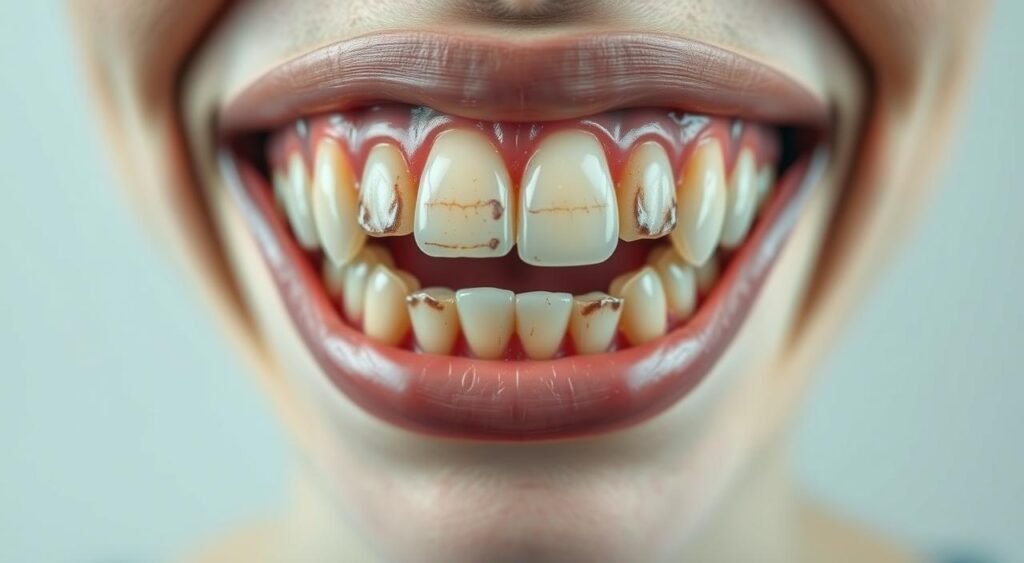
Tooth Extraction and Replacement
In severe cases of overcrowding or misalignment of the bottom teeth, removing a tooth might be needed. This makes space for the teeth to line up right. The dentist takes out one or more teeth to fix the crowding and improve the teeth’s position.
After taking out a tooth, the dentist might suggest putting in a dental implant, bridge, or partial denture. These options help keep the smile looking good and stop the teeth from getting more misaligned.
Dental implants are a top choice for replacing one missing tooth. They offer a strong base that works like a natural tooth. Bridges and partial dentures can also work, but they might need changes to the teeth next to them to hold them in place.
| Restoration Option | Advantages | Disadvantages |
|---|---|---|
| Dental Implant | Provides a permanent, stable solutionMaintains the integrity of the jawboneLooks and functions like a natural tooth | Requires a surgical procedureCan be more expensive than other options |
| Dental Bridge | Anchors to adjacent teeth for supportRestores the appearance of the missing toothCan be a more affordable option | Requires the modification of adjacent teethMay be less durable than a dental implant |
| Partial Denture | Can replace multiple missing teethRemovable for easy cleaning and maintenanceCan be a more budget-friendly option | May be less stable and comfortable than other optionsRequires periodic adjustments or replacement |
It’s key to keep up with good oral hygiene and go to regular dental check-ups. This helps the long-term health and stability of the tooth or teeth you get to replace it.
Surgical Intervention for Severe Cases
In complex cases of malocclusion or skeletal discrepancies, surgical orthodontics may be the solution. It helps realign the jaws and improve facial harmony. Orthognathic surgery, or jaw surgery, can fix severe bite issues. It makes the smile both more functional and aesthetically pleasing.
Recent statistics show that over 95% of orthodontic patients can fix their problems with braces and other treatments. But for severe skeletal issues, braces alone might not be enough. That’s when surgery is needed.
Conditions like severe overbites, moderate to severe underbites, and anterior open bites often need jaw surgery. Surgery is also suggested when a small chin or long facial type is the main concern. Braces can’t fix these issues on their own.
Braces are great for moving teeth, but they can’t move jaws. For skeletal jaw problems, surgery is often necessary. Orthognathic surgery can greatly improve jaw alignment. This leads to better smile appearance and function.
Deciding on surgical orthodontics is a team effort. The patient, orthodontist, and oral surgeon work together. They create a treatment plan tailored to the patient’s needs. This ensures a smooth and successful orthodontic journey.
Preventing Further Misalignment
After orthodontic treatment, it’s key to keep up the good work. Wearing retainers as your orthodontist says is crucial. These devices help keep your teeth in line and stop them from moving back to crooked teeth.
Good oral hygiene and regular dentist visits are also important. They help keep your smile straight and healthy. Always use your retainers as told to keep your teeth in their new spot.
Importance of Retainers and Maintenance
After fixing your bottom teeth with braces or clear aligners, you’re not done yet. Retainers are special devices that keep your teeth in place. They stop them from moving back to crooked.
It’s important to wear your retainers for at least 12-22 hours a day. This helps make sure your orthodontic treatment lasts.
Going to the dentist regularly for check-ups and cleanings is also key. Your dentist can check how your retainers fit and adjust them if needed. This keeps them working right.
If you don’t wear your retainers or take care of your mouth, your bottom teeth might move back. This could undo all the good work from your treatment. By wearing your retainers as directed and taking good care of your teeth, you can straighten bottom teeth naturally and fix crooked bottom teeth without braces.
Conclusion
Crooked bottom teeth are common and affect many people around the world. They often need orthodontic treatment. The reasons can be genetic, childhood habits, or losing teeth early.
At first, these teeth might seem just a cosmetic issue. But they can really affect your health. They can make eating hard, increase tooth decay risk, and lead to gum disease.
There are many ways to fix crooked bottom teeth. You can use braces, clear aligners, dental bonding, or veneers. In some cases, you might need to have a tooth pulled and replaced. Rarely, surgery is needed.
It’s important to keep your teeth clean and follow your dentist’s advice. Wearing a retainer after treatment helps keep your teeth straight. This is key for keeping your teeth looking good for a long time.
Knowing what causes crooked teeth and the treatments available helps you take action. You can choose from traditional braces, clear aligners, or other new methods. These options can fix crooked teeth and boost your oral health and function.
With the right care and professional help, you can beat the challenges of crooked teeth. You can get a beautiful, healthy smile that makes you feel confident.
FAQ – Crooked Bottom Teeth
What are the main causes of crooked bottom teeth?
Crooked bottom teeth often result from insufficient space in the jaw and teeth crowding. Bad habits such as thumb sucking or prolonged pacifier use can also contribute.
Can genetic factors and inherited traits contribute to crooked bottom teeth?
Yes, genetics can play a significant role. Jaw shape and tooth positioning, both inherited traits, can increase the likelihood of crooked teeth.
What are the consequences of having crooked bottom teeth?
Crooked teeth can make eating and chewing difficult and increase the risk of cavities and gum disease due to difficulty cleaning them properly.
What are the treatment options for crooked bottom teeth?
Treatment options include braces, clear aligners, dental bonding, or porcelain veneers. In severe cases, tooth extraction and replacement might be necessary.
Is it necessary to wear retainers after orthodontic treatment?
Yes, wearing retainers as directed by your orthodontist is essential to maintain the results and prevent teeth from shifting back to their original position.





